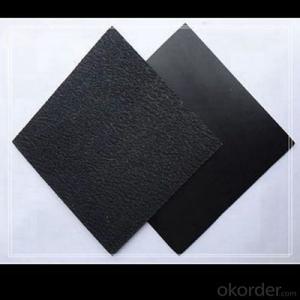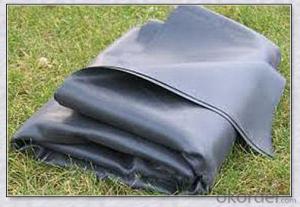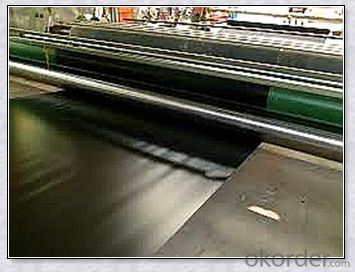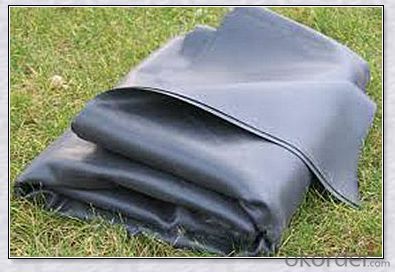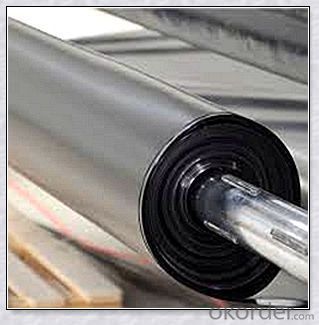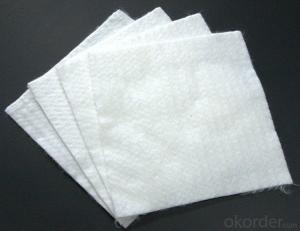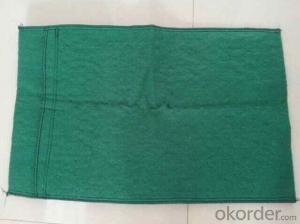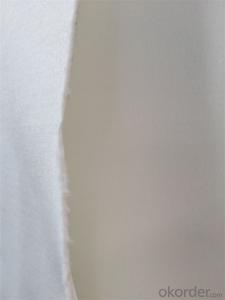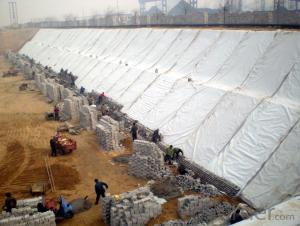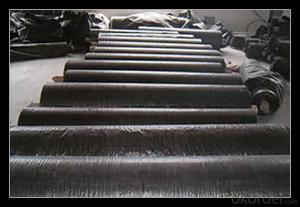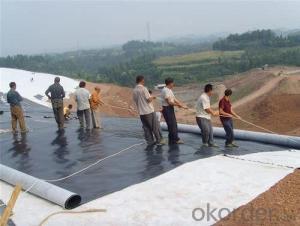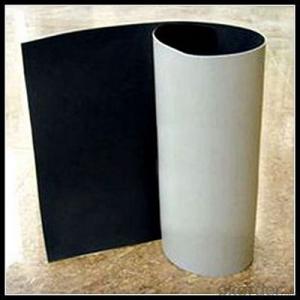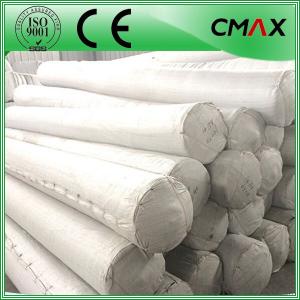Non Woven Geotextile Price for Building Material Smooth Geomembrane Roll
- Loading Port:
- China main port
- Payment Terms:
- TT OR LC
- Min Order Qty:
- 1000 m²
- Supply Capability:
- 1000000 m²/month
OKorder Service Pledge
OKorder Financial Service
You Might Also Like
Specification
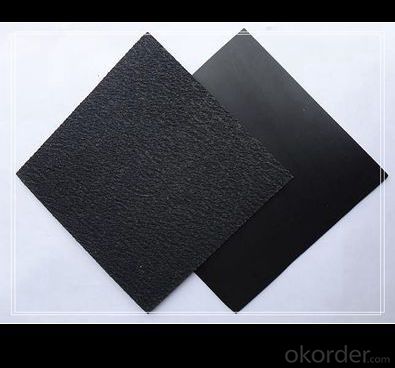
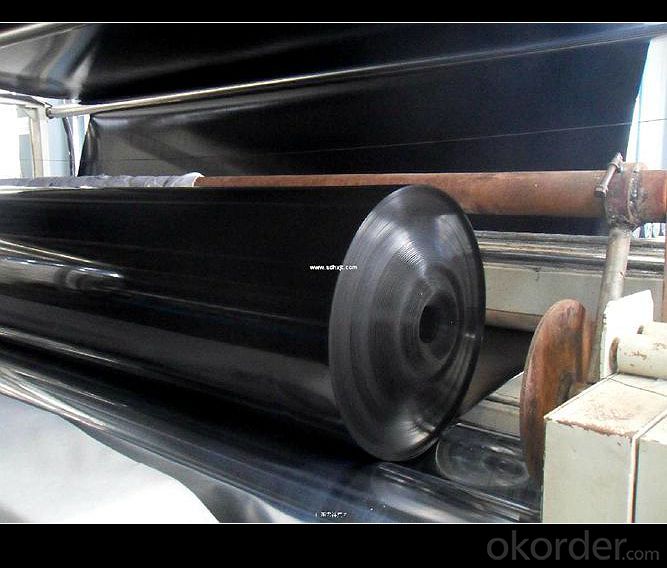
Type:
Geomembranes, HDPE Geomembrane
Place of Origin:
China (Mainland)
Brand Name:
CMAX
Model Number:
GM ISO
Material:
HDPE, HDPE
Density:
0.94kg/m3
Thickness::
1mm-3mm
Width::
4-9m
Color:
Black/ Blue/Green and Other
Standard:
ASTM/ GM13/GH-1/GH-2
Surface:
Smooth/ Textured
Usage:
It is the first choice material of drainage,filtration reinforcement and protection
Packaging & Shipping
Packing: PLASTIC FILM INSIDE, AND WOVEN BAG OUTSIDE
Shipping: About 15 days after receipt the deposit
Our Service
Quality assurance
1.On a regular basis or as per your request,we entrust national testing agencies to conduct quality inspections
2. Strictly in accordance with the ISO9001-2008 international quality system standard,we monitor and manage the whole process throughout production,quality testing,and measurement to ensure product quality
3. For quality-related construction delay or substandard construction(except for damage or losses due to customer’s responsibility or irresistible natural disasters),we have refunding,replacement,and repair services.We will respond to customers’ feedbacks on quality issues within 24 hours.
Q: What kind of payments does jenor support?
A: T/T, L/C, Cash are accepted.
Q: Do you charge for the samples?
A: Accordeing to our company policy, the samples are free, we only charge the freight fee. And we will return the freight fee during the next order.
Q: Can you produce according to customers' design?
A: Sure, we are professional manufacturer, OEM and ODM are both welcome.
Q: Do you have other products?
A: Yes, please check the pictures:
geotextile fabric
permeability,filtration,easy for construction
ISO and CE certificate
Good quality and competitive price
- Q: Differences between staple acupuncture nonwoven geotextile and filament spunbonded nonwoven geotextile
- Appearance of different shapes: staple acupuncture non-woven geotextile in the appearance of the surface of the fiber is shorter, and filament spunbond acupuncture non-woven geotextile surface fiber longer. Different materials: staple acupuncture non-woven geotextile with PET polyester staple fiber acupuncture, and filament spunbond acupuncture non-woven geotextile made of polyester chips. Production equipment and different technology: staple acupuncture non-woven geotextile is the polyester staple fiber through the mixing - clutter - comb - shop - acupuncture, and filament spunbond acupuncture non-woven geotextile is the polyester Sliced hot melt - spinning - carding - shop - acupuncture. Implementation of different standards: staple acupuncture non-woven geotextile implementation of GB / T-2008 standards, and filament spunbond acupuncture non-woven geotextile implementation of GB / T-2008 standard. The same specifications of filament spunbonded acupuncture non-woven geotextile quality is better than staple acupuncture non-woven geotextile. Price: the same specifications of polyester staple acupuncture non-woven geotextile price is lower than filament spunbond acupuncture non-woven geotextile.
- Q: Can geotextiles be used in riverbank stabilization projects?
- Yes, geotextiles can be used in riverbank stabilization projects. Geotextiles are often employed to reinforce and protect soil in various civil engineering applications, including riverbank stabilization. They can help prevent erosion, control sediment movement, and provide stability to riverbanks by improving soil strength and drainage.
- Q: Can geotextiles be used in geosynthetic clay liner applications?
- Yes, geotextiles can be used in geosynthetic clay liner applications. Geotextiles are often used as a protective layer or separation barrier in combination with geosynthetic clay liners to enhance their performance and improve their effectiveness in various geotechnical applications.
- Q: Why do you want to wrap the geotextile
- Filter function, filter function, I am specializing in the production of geotechnical materials
- Q: Roof 1: 3 cement mortar leveling layer mixed with polypropylene or nylon-6 fiber is the role of what?
- Reduce the expansion coefficient of cement
- Q: How do geotextiles prevent soil erosion on slopes?
- Geotextiles prevent soil erosion on slopes by acting as a barrier between the soil and water. They allow water to pass through while trapping soil particles, which helps to stabilize the slope and prevent erosion. Additionally, geotextiles improve soil structure by providing reinforcement and reducing the impact of rainfall, thus minimizing the potential for erosion.
- Q: Where to sell geotextiles
- Those who produce geotextile manufacturers are selling black geotextile. Black geotextile according to the use of a lot of specifications, the price difference is very large. The weight per square meter between about 50-1000g grams, the weight of different unit price is different, the inquiry directly asked how much money per ton. According to the use of distinction between the current market price per ton price between 5,000 yuan - yuan. For the conservation, isolation, insulation of the geotextile the cheapest. In the 5000 yuan / ton between. For the filter, soft base treatment, slope protection, reinforced decoration, and other purposes of the black geotextile most expensive in - yuan / ton. The same black color, but different uses, production processes and production costs are not the same.
- Q: National standard geotextile and non - standard how to distinguish
- First of all, the appearance: the national standard geotextile because of the use of high-quality production of large fiber, the production of Dan Shan measured Yao non-astonishing stone products will be dense needle, the appearance of bright white or white. Rather than the standard geotextile generally used in the production of small or small fiber, the product is slightly loose acupuncture, the appearance of dark yellow or gray soil. GB geotextile and non-standard geotextile together through the appearance is easy to distinguish. Second, the strength: the national standard geotextile material is excellent, strong product breaking strength and bursting high strength, the same weight of non-standard geotextile products broken strength and broken broken strong, can be used to tear, items piercing and other methods to distinguish the quality of simple Good or bad. Finally, the price: GB geotextile price is higher than non-standard geotextile, the procurement of less than the market price of geotextiles to be careful.
- Q: Can geotextiles be used in geotextile wrapped columns?
- Yes, geotextiles can be used in geotextile wrapped columns. Geotextiles are commonly used as a wrapping material for columns in geotechnical engineering applications. They provide reinforcement and confinement to the columns, enhancing their load-bearing capacity and stability. Additionally, geotextiles help prevent soil erosion and facilitate proper drainage, further improving the performance of geotextile wrapped columns.
- Q: How do geotextiles compare to traditional construction materials?
- Geotextiles offer several advantages over traditional construction materials. Firstly, geotextiles are lightweight and easy to handle, making them more convenient to transport and install. Secondly, they have excellent filtration properties, allowing for effective drainage and preventing soil erosion. Additionally, geotextiles are highly durable, resistant to rot and chemicals, and can withstand harsh environmental conditions. They are also relatively cost-effective compared to traditional materials, reducing project expenses. Overall, geotextiles provide a versatile and efficient solution for various construction applications.
Send your message to us
Non Woven Geotextile Price for Building Material Smooth Geomembrane Roll
- Loading Port:
- China main port
- Payment Terms:
- TT OR LC
- Min Order Qty:
- 1000 m²
- Supply Capability:
- 1000000 m²/month
OKorder Service Pledge
OKorder Financial Service
Similar products
Hot products
Hot Searches
Related keywords
